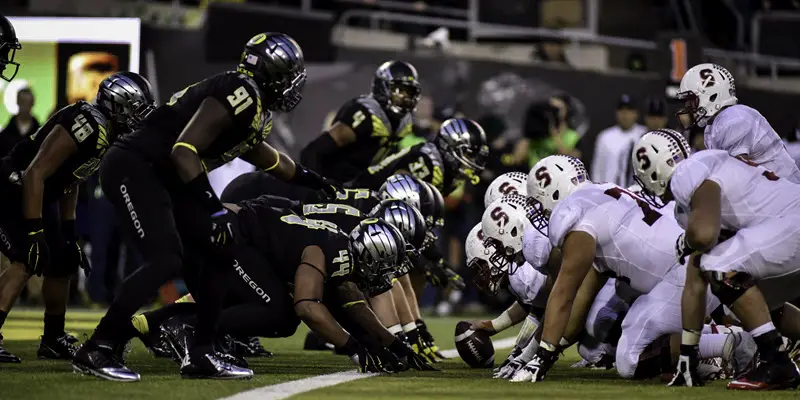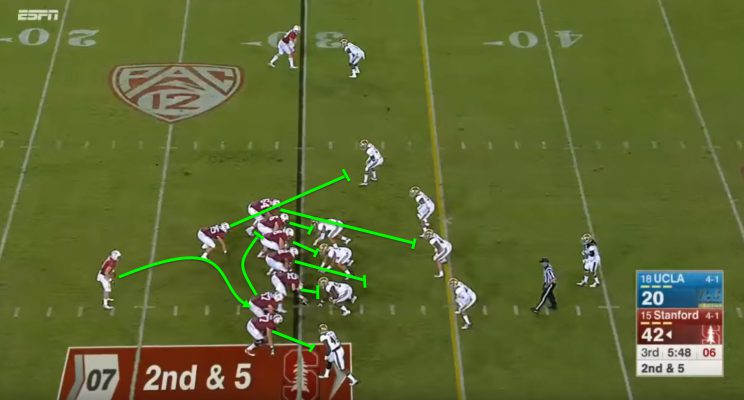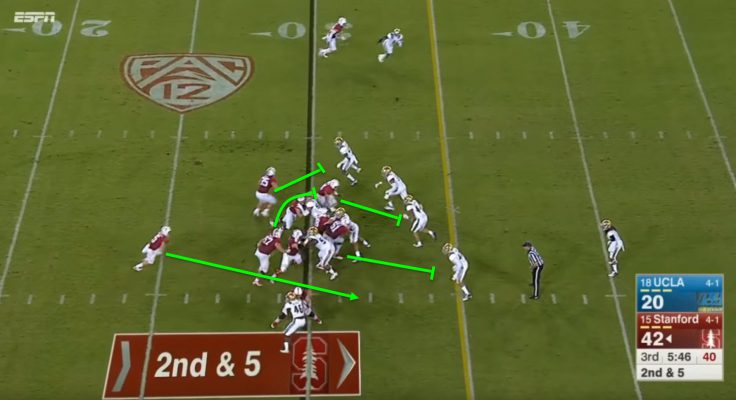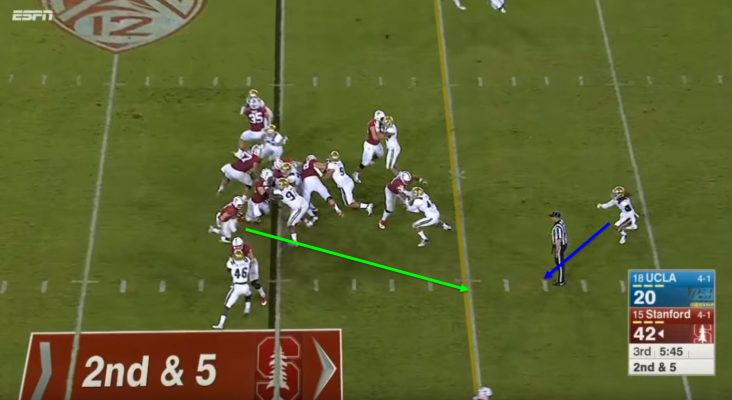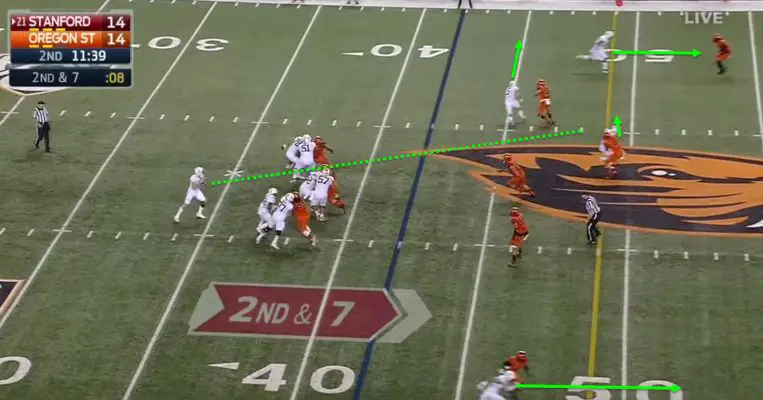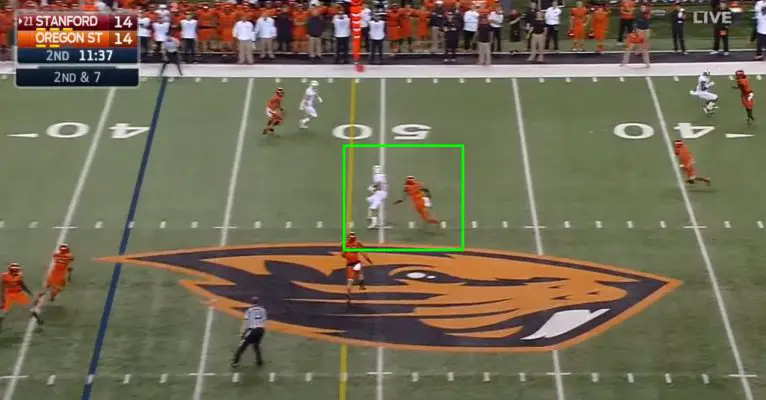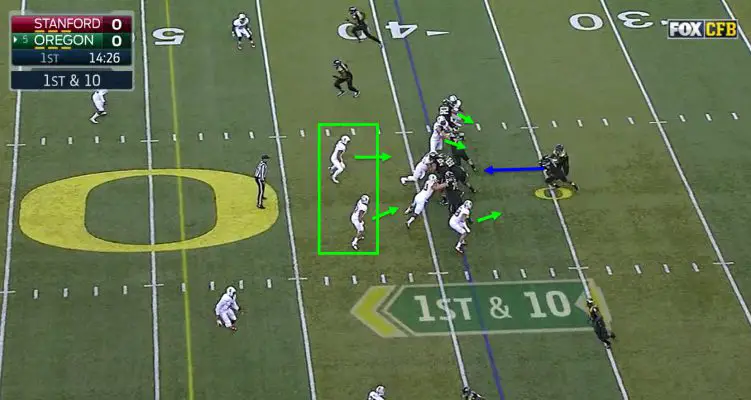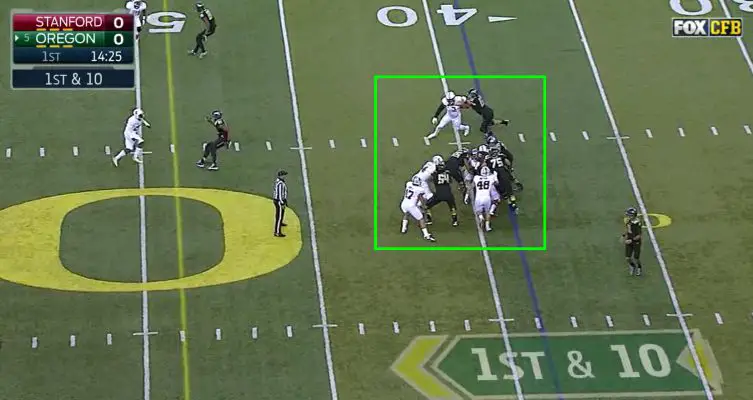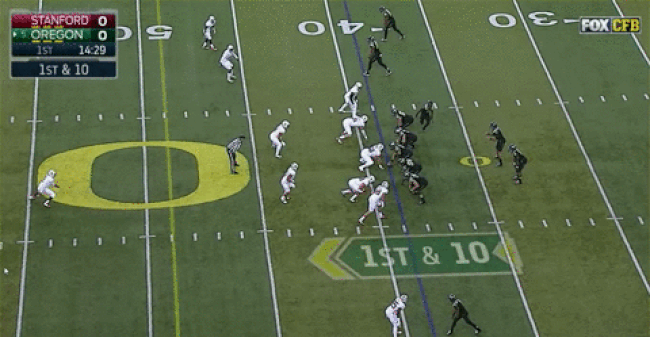Since the beginning of the Pac-12, the North division, crown has gone through Eugene or Palo Alto. This year is no different. Stanford has the fast track to the title game, but the Ducks are rolling as of late and are hungry to keep their Pac-12 title hopes alive.
Last year, the roles were reversed; the Cardinal were having a disappointing year and the Ducks had been steam-rolling opponents since their early season loss.
In the last few weeks, since the return of Vernon Adams, Jr., the Ducks’ offense has looked as potent as ever, scoring 43.7 points per game. The only offense that has looked better … Stanford. Since falling flat on their face in their first game of the season against Northwestern, Stanford has averaged 41 points per game, while only giving up 19 per game.
When you think of Stanford, you think brute force, or as they say, “Intellectual Brutality.” Just line up, and pound, no trickery.
This is still the basis of Stanford football, as they still employ the famous jumbo/monster/moose package, where you see 7-8 offensive linemen lined up foot-to-foot. The difference this year, though, is that the coaches have opened up the playbook, mixing in dozens of formations, slight mis-directions and trickery.
It is so hard to prepare for Stanford, especially for Oregon. Not only do they have dozens of formations to study, but Stanford rarely shows any play more than three times a game. Not to mention the fact that the Oregon defense doesn’t have an offense similar to Stanford’s to practice against.
Speaking of preparation, the Ducks had better prepare for Christian McCaffrey. The Stanford running back, and Heisman Trophy contender, leads the country in all-purpose yards at 241.56 yards per game.
McCaffrey does everything for Stanford — he has 1207 rushing yards, 325 receiving yards, 642 return yards, and just last week he threw a 28-yard touchdown pass. One of the ways that Stanford likes getting the ball to McCaffrey, is out of the Wildcat, or WildCaff, formation.
As you can see in the screenshot above, Stanford is lined up in the Wildcat, overloading the left side of the line. The Bruins are lined up in a 3-4 with a pass-rushing linebacker. Clearly, Stanford wants to run the ball to the left. That doesn’t bother Stanford, though; they have faith in their offensive line’s ability to still block the defense.
At the snap, the right guard pulls to go block the first UCLA player he sees. Every Stanford player is going to have a one-on-one block with a defensive player. McCaffrey is supposed to follow the pulling guard and fullback to the left side of the line. The Bruins see this and over-commit.
The Stanford line holds their blocks, allowing McCaffrey to see the hole on the backside and cut back. McCaffrey is so quick, and much tougher a runner than he looks, so despite the Bruins ability to get a hand on McCaffrey, he just runs through the tackles.
The receiver wide right, off the screen, holds his block very well, so the safety is the only one left to stop the play. McCaffrey’s speed is too much for him, though, and this turns into a 70-yard touchdown for the Stanford running back.
Stanford’s quarterback, Kevin Hogan, is no Vernon Adams or Marcus Mariota, but he does win and is extremely efficient. Hogan also can run — just ask Washington State, where he had 112 rushing yards and 2 touchdowns. He is a dual threat.
Let’s not forget about the three NFL-caliber tight ends Hogan has to throw to. They provide so many mismatches for defenses, Pellum will be losing much sleep over them.
As you can see in the screenshot above, the Stanford offense has spread out, with three receivers lined up wide left and another receiver lined up wide right.
Of those three wide left, only one of them is a receiver; the other two are McCaffrey and one of Stanford’s potent tight ends. The Oregon State defense is lined up in a 3-3-5 formation.
The two receivers wide left and right are going to run Go routes. This opens up the corners and flats for the receivers. The linebacker/safety hybrid covering the tight end is riding step for step with his man, taking away the deep route.
The tight end has an option route in this play – either run the deep curl, or run a post or some deep route.
The tight end and quarterback have to be seeing the same thing so that the quarterback doesn’t think the tight end should run a deep route when he’s actually going to run something else.
As Hogan is one of the most veteran QBs in the country, he and his players are on the same page and they both read that the curl is open.
The tight end cuts the route off, and Hogan throws a laser to the outside of the tight end. The coverage is actually extremely good, but Stanford’s tight ends are just too good at using their big bodies to keep the defender away from the ball.
Every year, everyone says the Stanford defense is going to take a step back after losing so many players to the NFL or graduation, and every year they always rebuild and lead the conference in many defensive categories.
The case is the same this year. After a slow start to the year, the defense has come on as of late, leading the conference in points per game in Pac-12 play. Let’s take a look at how this defense may try and stop the Ducks offense.
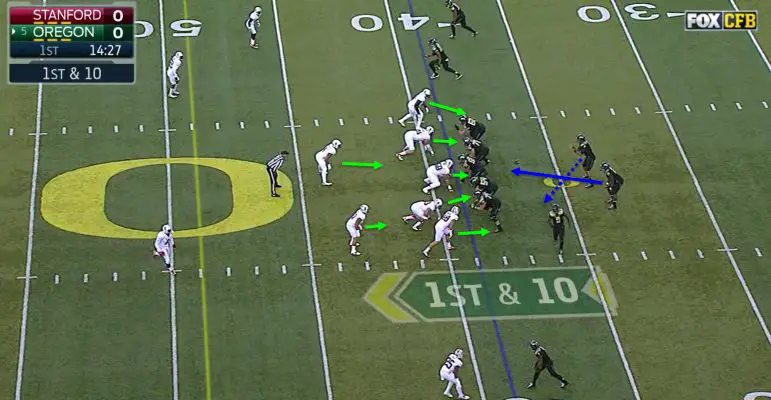
Stanford’s D has been one of the few defenses that can slow down the Ducks’ offense in the past years.
As you see in the screenshot above from last year’s game, the Stanford defense is lined up in a 3-4 with the two outside linebackers showing pass rush.
At the snap, the right outside linebacker is staying home, taking away the quarterback run. The rest of the defensive line and the left outside linebacker are just trying to prevent the offensive line from getting any push.
The nose tackle is going to get double teamed for a second before the left guard goes to block a linebacker. Incredibly, the nose tackle is able to keep the left guard occupied for a long time.
The left guard is unable to get to the second level quickly. This keeps the two middle linebackers free long enough to fill the holes. When the guard does reach the linebacker, he does a very good job keeping the guard off of him by using his hands. The running back has nowhere to go and is dropped for meager gain of a yard.
The Oregon-Stanford matchup is always one of the most intriguing games in the country. It’s the leader of the new spread, speed attack versus the leader of the old-school ground-and-pound attack.
Surprisingly, though, the two offenses are extremely similar when you start looking at the advanced statistics. The difference comes when you start looking at the defensive statistics – Oregon is one of the worst in the Pac-12, while Stanford is one of the best.
Stanford’s best weapon has always been their run game, leading to a huge disparity in time of possession.
Take last week’s game versus Colorado for example. Two weeks ago, Colorado was one play short of the record of 115 plays in a game. Last week, Stanford held the ball for so long, that Colorado was only able to run 53 plays. That’s incredible.
That means Oregon has to convert their possessions into touchdowns; field goals won’t cut it. The defense must also get the Stanford offense off the field when they get them into third-and-long situations.
I really feel like this game could go to either team, depending on which Oregon defense we see.
If the Oregon defense from the Cal game that only gave up 28 points shows up, I can see them getting a huge win. If the defense that gave up what seemed like a million yards to ASU shows up, this will be a very long one.
For this, I am going to give two predictions, Stanford win 45-28 or Oregon win, 35-31.
“Oh, how we love to learn about our opponents on FishDuck.com.”
Rory Davidson
Football Opponent Analyst for CFF Network/FishDuck.com
Eugene, Oregon
Top photo by Craig Strobeck
Related Articles:
Rory Davidson: Rory (Football Analyst) is a sophomore at Oregon in the fall (Class of 2018). He has been a devout Stanford football fan since he was 2 months old and is excited about the energy and greatness Oregon sports has to offer. For the past 6 years he has been doing advanced data analytics for his high school football team and working alongside the coaches to understand how they strategize about the game. He wants to integrate more statistics into his analyses and try to help readers learn about and understand the future of sports.

